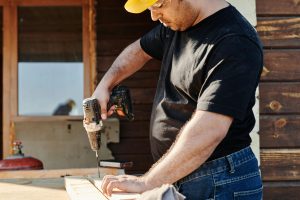Methods Savvy Investors Use to Evaluate Neighborhood Safety
Savvy investors know that one of the most critical factors in evaluating a potential investment property is the safety of the neighborhood. A safe and secure neighborhood not only appeals to potential tenants but also helps to ensure a steady return on investment. Regardless of the type of property, investors are always looking for methods to evaluate the safety of a neighborhood so that they can make informed decisions. In this article, we will explore the top methods that savvy investors use to evaluate neighborhood safety.
Evaluating Crime Rates and Statistics
The first and most obvious method that most investors use to evaluate the safety of a neighborhood is by looking at crime rates and statistics. These can easily be found online or through local law enforcement agencies. Investors can get a sense of the crime levels in the neighborhood by looking at statistics such as the number of reported crimes, type of crimes, and frequency of incidents.
However, it is essential to dig deeper and look beyond just the numbers. Some neighborhoods may have high crime rates due to a few isolated incidents, while others may have recurring criminal activity. It is crucial to look at the types of crimes and determine if they are violent or non-violent. Additionally, comparing the crime rates of the neighborhood to the city or state average can provide context and a better understanding of the safety level.
Conducting a Neighborhood Walkthrough
Another effective method that savvy investors use is to do a walkthrough of the neighborhood. This allows investors to see firsthand what the neighborhood is like and make observations about its safety. During the walkthrough, investors should look for signs of neglect or vandalism, graffiti, and broken streetlights, which can be indicators of an unsafe neighborhood. Additionally, take note of the general cleanliness, upkeep of homes and buildings, and if there are any abandoned properties or suspicious activities.
A walkthrough also provides an opportunity to speak with local residents and business owners. These individuals can provide valuable insights into the safety of the neighborhood and their personal experiences. It is also an opportunity to ask about community watch groups or if there is a significant police presence in the area.
Researching the School District
For investors interested in rental properties, researching the quality of the school district can also provide valuable information about the safety of a neighborhood. A well-performing school district often signifies a safe and stable community. Additionally, renters with children are likely to prioritize neighborhoods with good schools, making properties in these areas more desirable and profitable.
Investors can research the school district’s test scores, graduation rates, and other performance metrics to get an idea of its quality. They can also reach out to the school district or visit the schools in person to learn more about the community and the measures in place to ensure the safety of students and staff.
Checking for Nearby Amenities
The presence of specific amenities can also indicate the safety of a neighborhood. For instance, a neighborhood with a community center or a park can suggest that the community is well-kept and invested in providing recreational opportunities for its residents. On the other hand, areas with a large number of bars or liquor stores may indicate a higher level of crime.
Investors can also research the local businesses in the area. Stable and thriving businesses can indicate a stable and safe neighborhood. On the other hand, boarded-up storefronts and abandoned buildings can be warning signs of a less safe area.
Consider Hiring a Professional
For those new to real estate investing or unfamiliar with a particular area, it may be beneficial to hire a professional to conduct a safety assessment of the neighborhood. These professionals are trained to identify potential hazards and provide a thorough evaluation of the area’s safety. They can also provide recommendations and insights on how to mitigate any safety concerns and improve the neighborhood’s overall safety.
Conclusion
Evaluating the safety of a neighborhood is an essential step in the real estate investment process. Savvy investors understand that a safe neighborhood is critical not only for the security of their investment but also for attracting potential tenants and achieving a profitable return on investment. By using these methods, investors can make informed decisions and choose the right property in a safe and desirable neighborhood.











